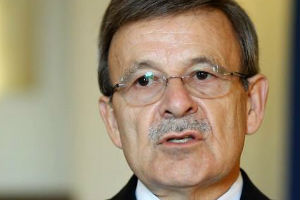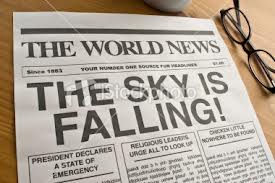 Welcome to O.D. Fridays at DonorDreams blog. Every Friday for the foreseeable future we will be looking more closely at a recent post from John Greco’s blog called “johnponders ~ about life at work, mostly” and applying his organizational development messages to the non-profit community.
Welcome to O.D. Fridays at DonorDreams blog. Every Friday for the foreseeable future we will be looking more closely at a recent post from John Greco’s blog called “johnponders ~ about life at work, mostly” and applying his organizational development messages to the non-profit community.
In a post titled “Just a Note; Just a Phone Call!” John talks about the power of a simple handwritten note or well-timed phone call.
After reading John’s post, I couldn’t stop obsessing about how many emails and texts I now get and how few phone calls and handwritten notes there now seem to be. For example, I went on a road trip on Wednesday of this week, which meant being in a car for six hours and away from my email inbox. I spent tons of time talking to clients on the phone, but when I arrived at my destination and looked at my email inbox . . . OMG!
Maybe it is just that I am getting older, but the world seems to be moving at an insane pace. I’m also not smart enough to know if our communications tools (e.g. text, email, etc) are fueling this speed or if it is just a necessity or symptom of this acceleration. However, I am smart enough to know that people who donate to non-profit organizations are special people who deserve a little more attention than a form letter generated from your donor database, a simple text or quick email.
In my experience, being intentional and personal gets you and your organization noticed.
I believe Penelope Burk, author of Donor Centered Fundraising and CEO of Cynus Applied Research, says it better than could:
“A handwritten letter is the ultimate in personal recognition because it proves that someone in your organization spent at least a few moments thinking specifically about that donor.”
As many of you know, Penelope does a ton of survey research and looks specifically at donor and organizational behaviors. According to the research in her book, the following reasons were cited by agencies as to when they compose a handwritten letter to a donor:
- the donor is well-known to the writer;
- the gift is of exceptional value;
- the donor is a leadership volunteer;
- the donor has been giving for a long time; or
- the donor is prominent in the community.
A very dear friend of mine, who is the former executive director of one of my favorite local charities, used to employ handwritten note techniques with me all the time. Here is what I saw her doing:
- I would receive a handwritten note on my donor database, computer generated gift acknowledgement letter;
- On my birthday, I would receive a card with a handwritten note wishing me well and thanking me for my longtime support;
- When a donor’s name shows up in the newspaper or someplace public, she would clip it or copy it, attach a nice handwritten note of congratulations and send it to them.
Phone calls are also super effective, but I believe you need to be very careful with who you put on the phone.
 For example, one local charity likes to conduct “thank-a-thon” events during the Thanksgiving season. I cannot tell you how upset I get as one of their donor when I pick-up the phone and there is a client at the other end telling me how much they appreciate my donation.
For example, one local charity likes to conduct “thank-a-thon” events during the Thanksgiving season. I cannot tell you how upset I get as one of their donor when I pick-up the phone and there is a client at the other end telling me how much they appreciate my donation.
What? Huh? You’re probably wondering “Where did THAT just come from?” or “What is wrong with THAT?”
For me, it goes back to Penelope Burk’s research and the number one reason why non-profit agencies get more personal in their acknowledgement and thanks:
“. . . the donor is well-known to the writer . . .”
- Do I know the client making that thank-a-thon phone call? No.
- Did I get solicited by the client? Nope.
- Do I want to make the client feel uncomfortable? Definitely not.
- Does a client, who is “obviously reading from a script,” come across to me as “personal” and “heartfelt”? Absolutely not!
Am I opposed to thanks-a-thons as a donor stewardship tactic? No . . . but speaking personally as a donor I can honestly say that an informal, unscripted, personal phone call from the person who had originally asked me for money would’ve been something special and memorable.
What is your organization’s policy, procedure or practice around handwritten notes or phone calls to donors? What has been your personal experience as a donor? Any thoughts on what appears to be a trend around using more and more forms of impersonal communication (e.g. text and email) and what can be done to guard against its overuse? Please use the comment box below to share your thoughts, opinions and experiences.
Erik Anderson
Founder & President, The Healthy Non-Profit LLC
www.thehealthynonprofit.com
erik@thehealthynonprofit.com
http://twitter.com/#!/eanderson847
http://www.facebook.com/eanderson847
http://www.linkedin.com/in/erikanderson847


 Happy New Years Eve! Are you ready for 2013?
Happy New Years Eve! Are you ready for 2013? “It was about this time that another projector, the Rev Gilbert Tennent, came to me with a request that I would assist him in procuring a subscription for erecting a new meeting-house. It was to be for the use of a congregation he had gathered among the Presbyterians, who were originally disciples of Mr. Whitehead.
“It was about this time that another projector, the Rev Gilbert Tennent, came to me with a request that I would assist him in procuring a subscription for erecting a new meeting-house. It was to be for the use of a congregation he had gathered among the Presbyterians, who were originally disciples of Mr. Whitehead. This phenomenon is called the “crowding out effect” and I wrote about it in the following blog posts in 2011:
This phenomenon is called the “crowding out effect” and I wrote about it in the following blog posts in 2011: The crowding out effect is real, and it is something non-profit organizations need to understand and deal with. If not, then I advise putting the following age-old expression in a frame above the boardroom door: “The road to hell is paved with good intentions.”
The crowding out effect is real, and it is something non-profit organizations need to understand and deal with. If not, then I advise putting the following age-old expression in a frame above the boardroom door: “The road to hell is paved with good intentions.” Fundraising policies
Fundraising policies Yesterday morning Jimmie Alford died of an apparent heart attack at the age of 69. This sad news started circulating slowly as the day unfolded, and then it snowballed into an online viral event and my email inbox is full of people sharing the news, their grief, and their disbelief.
Yesterday morning Jimmie Alford died of an apparent heart attack at the age of 69. This sad news started circulating slowly as the day unfolded, and then it snowballed into an online viral event and my email inbox is full of people sharing the news, their grief, and their disbelief. It is that time of the year when retailers are pulling out every stop in their little bag of tricks to get your attention and hopefully your holiday dollars. One of those shiny objects that some retailers use is called cause related marketing (CRM). Wikipedia does a nice job of
It is that time of the year when retailers are pulling out every stop in their little bag of tricks to get your attention and hopefully your holiday dollars. One of those shiny objects that some retailers use is called cause related marketing (CRM). Wikipedia does a nice job of  Welcome to O.D. Fridays at DonorDreams blog. Every Friday for the foreseeable future we will be looking more closely at a recent post from John Greco’s blog called “
Welcome to O.D. Fridays at DonorDreams blog. Every Friday for the foreseeable future we will be looking more closely at a recent post from John Greco’s blog called “ In that five-minute period of time as I paced the back of the banquet hall, there was a moment where I stopped listening and worrying about LaShaunda and I focused on what was happening in the room:
In that five-minute period of time as I paced the back of the banquet hall, there was a moment where I stopped listening and worrying about LaShaunda and I focused on what was happening in the room: When I hear one donor say something once, I chalk it up to something interesting. When I hear two donors say the same thing, I usually think it is an interesting occurence. However, when three or more donors express the same sentiment, I sit up . . . take notice . . . and treat it like a potential trend.
When I hear one donor say something once, I chalk it up to something interesting. When I hear two donors say the same thing, I usually think it is an interesting occurence. However, when three or more donors express the same sentiment, I sit up . . . take notice . . . and treat it like a potential trend. While fear is irrational, it definitely impacts human behavior. I believe most students learn this in Psychology 101. So, if people “think” the sky is falling, it is falling regardless of the facts.
While fear is irrational, it definitely impacts human behavior. I believe most students learn this in Psychology 101. So, if people “think” the sky is falling, it is falling regardless of the facts. Here are a few quick tips you may want to remember when jumping into these discussions:
Here are a few quick tips you may want to remember when jumping into these discussions: This morning I am asking for your help with a small project I am working on. A few weeks ago I agreed to help one of my favorite non-profit organizations with a staff transition. Not only did their development director move on to greener pastures at the end of the summer, but their executive director also recently resigned. So, the board asked me to step into the void and help their management team with a variety of year-end miscellaneous projects (e.g. year-end holiday mailing, 2013 budget construction, resource development plan, etc).
This morning I am asking for your help with a small project I am working on. A few weeks ago I agreed to help one of my favorite non-profit organizations with a staff transition. Not only did their development director move on to greener pastures at the end of the summer, but their executive director also recently resigned. So, the board asked me to step into the void and help their management team with a variety of year-end miscellaneous projects (e.g. year-end holiday mailing, 2013 budget construction, resource development plan, etc). This question was inspired by a string of two or three grants in a row that this organization had just written. As a businessman, he asked this question because he is accustom to looking at everything through a “return on investment” (ROI) lens. In hindsight, this is what he saw:
This question was inspired by a string of two or three grants in a row that this organization had just written. As a businessman, he asked this question because he is accustom to looking at everything through a “return on investment” (ROI) lens. In hindsight, this is what he saw: Seriously, your feedback this morning will directly help another organization in its pursuit of developing fundraising best practices. Your participation will take all of a minute or two this morning. Please weigh-in. Your collective wisdom is massive and will bring tremendous value to this organization’s discussion. You can consider the few minutes that you invest in responding to this request as your “good turn” this holiday season. Please pay it forward!
Seriously, your feedback this morning will directly help another organization in its pursuit of developing fundraising best practices. Your participation will take all of a minute or two this morning. Please weigh-in. Your collective wisdom is massive and will bring tremendous value to this organization’s discussion. You can consider the few minutes that you invest in responding to this request as your “good turn” this holiday season. Please pay it forward!

